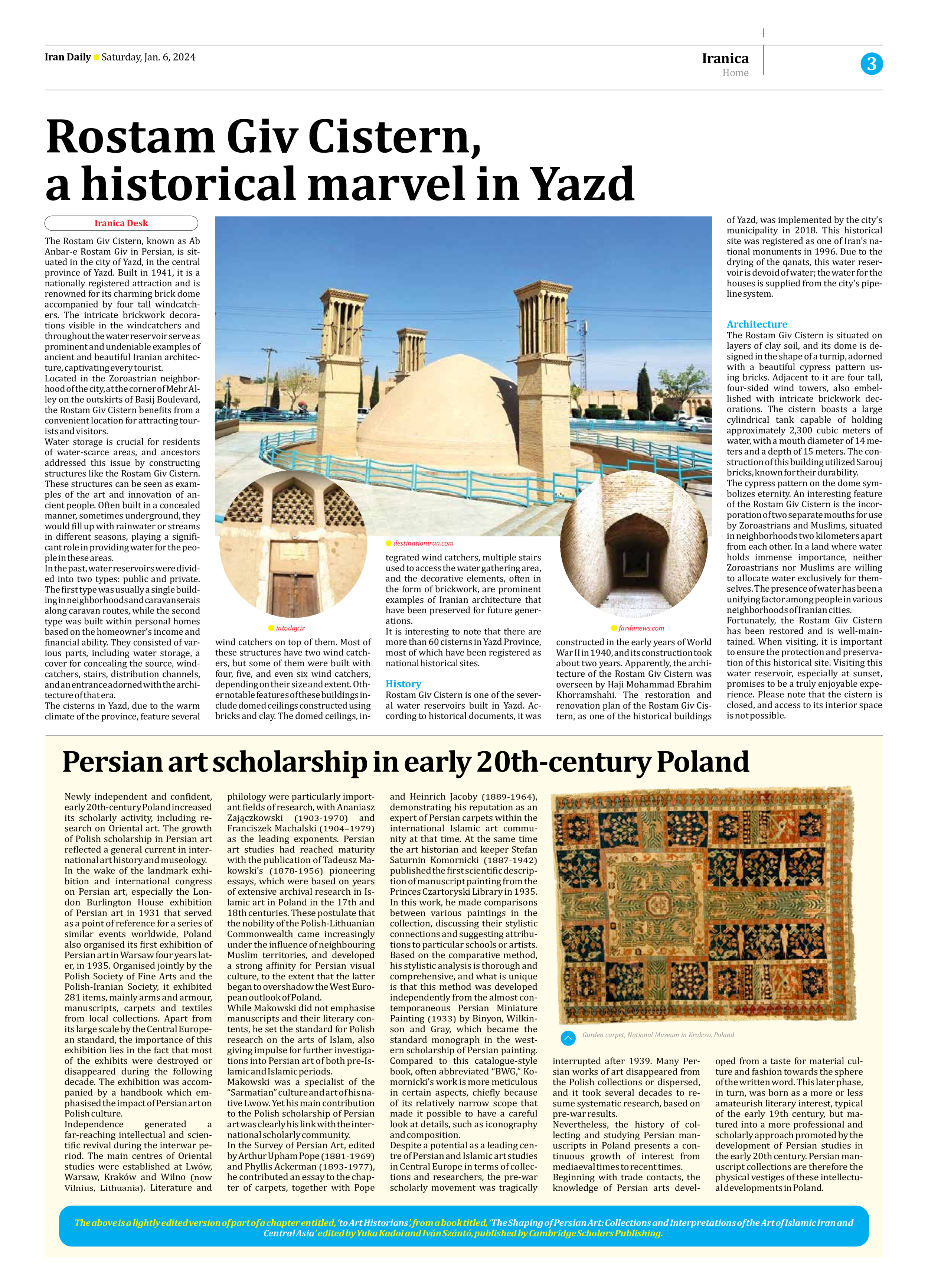
Persian art scholarship in early 20th-century Poland
Newly independent and confident, early 20th-century Poland increased its scholarly activity, including research on Oriental art. The growth of Polish scholarship in Persian art reflected a general current in international art history and museology.
In the wake of the landmark exhibition and international congress on Persian art, especially the London Burlington House exhibition of Persian art in 1931 that served as a point of reference for a series of similar events worldwide, Poland also organised its first exhibition of Persian art in Warsaw four years later, in 1935. Organised jointly by the Polish Society of Fine Arts and the Polish-Iranian Society, it exhibited 281 items, mainly arms and armour, manuscripts, carpets and textiles from local collections. Apart from its large scale by the Central European standard, the importance of this exhibition lies in the fact that most of the exhibits were destroyed or disappeared during the following decade. The exhibition was accompanied by a handbook which emphasised the impact of Persian art on Polish culture.
Independence generated a far-reaching intellectual and scientific revival during the interwar period. The main centres of Oriental studies were established at Lwów, Warsaw, Kraków and Wilno (now Vilnius, Lithuania). Literature and philology were particularly important fields of research, with Ananiasz Zajączkowski (1903-1970) and Franciszek Machalski (1904–1979) as the leading exponents. Persian art studies had reached maturity with the publication of Tadeusz Makowski’s (1878-1956) pioneering essays, which were based on years of extensive archival research in Islamic art in Poland in the 17th and 18th centuries. These postulate that the nobility of the Polish-Lithuanian Commonwealth came increasingly under the influence of neighbouring Muslim territories, and developed a strong affinity for Persian visual culture, to the extent that the latter began to overshadow the West European outlook of Poland.
While Makowski did not emphasise manuscripts and their literary contents, he set the standard for Polish research on the arts of Islam, also giving impulse for further investigations into Persian art of both pre-Islamic and Islamic periods.
Makowski was a specialist of the “Sarmatian” culture and art of his native Lwow. Yet his main contribution to the Polish scholarship of Persian art was clearly his link with the international scholarly community.
In the Survey of Persian Art, edited by Arthur Upham Pope (1881-1969) and Phyllis Ackerman (1893-1977), he contributed an essay to the chapter of carpets, together with Pope and Heinrich Jacoby (1889-1964), demonstrating his reputation as an expert of Persian carpets within the international Islamic art community at that time. At the same time the art historian and keeper Stefan Saturnin Komornicki (1887-1942) published the first scientific description of manuscript painting from the Princes Czartoryski Library in 1935. In this work, he made comparisons between various paintings in the collection, discussing their stylistic connections and suggesting attributions to particular schools or artists. Based on the comparative method, his stylistic analysis is thorough and comprehensive, and what is unique is that this method was developed independently from the almost contemporaneous Persian Miniature Painting (1933) by Binyon, Wilkinson and Gray, which became the standard monograph in the western scholarship of Persian painting. Compared to this catalogue-style book, often abbreviated “BWG,” Komornicki’s work is more meticulous in certain aspects, chiefly because of its relatively narrow scope that made it possible to have a careful look at details, such as iconography and composition.
Despite a potential as a leading centre of Persian and Islamic art studies in Central Europe in terms of collections and researchers, the pre-war scholarly movement was tragically interrupted after 1939. Many Persian works of art disappeared from the Polish collections or dispersed, and it took several decades to resume systematic research, based on pre-war results.
Nevertheless, the history of collecting and studying Persian manuscripts in Poland presents a continuous growth of interest from mediaeval times to recent times.
Beginning with trade contacts, the knowledge of Persian arts developed from a taste for material culture and fashion towards the sphere of the written word. This later phase, in turn, was born as a more or less amateurish literary interest, typical of the early 19th century, but matured into a more professional and scholarly approach promoted by the development of Persian studies in the early 20th century. Persian manuscript collections are therefore the physical vestiges of these intellectual developments in Poland.
The above is a lightly edited version of part of a chapter entitled, ‘to Art Historians’, from a book titled, ‘The Shaping of Persian Art: Collections and Interpretations of the Art of Islamic Iran and Central Asia’ edited by Yuka Kadoi and Iván Szántó, published by Cambridge Scholars Publishing.







